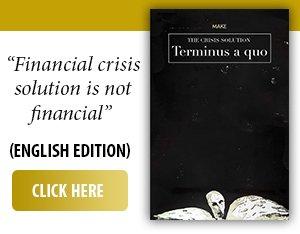Guvernul României va continua să furnizeze asistenţă umanitară pentru civilii din Gaza, iar asistenţa umanitară trebuie să aibă permisiunea de a intra în Gaza, a declarat ministrul român de externe Luminiţa Odobescu, luni, la sosirea la Consiliul Afaceri Externe (CAE), relatează Agerpres.
"În ceea ce priveşte criza din Orientul Mijlociu, voi exprima preocupările noastre privind situaţia umanitară foarte disperată din Gaza. Civilii trebuie să fie protejaţi în conformitate cu legea umanitară internaţională şi guvernul României va continua să furnizeze asistenţă umanitară pentru civilii din Gaza, iar asistenţa umanitară trebuie să aibă permisiunea de a intra în Gaza", le-a spus Luminiţa Odobescu jurnaliştilor înainte de reuniunea miniştrilor de externe ai UE.
"În acelaşi timp, este foarte important, fac apel la eliberarea imediată a tuturor ostaticilor", a subliniat ea, referindu-se la israelienii aflaţi sub controlul Hamas încă de la momentul atacului combatanţilor islamişti de pe 7 octombrie 2023, din sudul Israelului, care a declanşat războiul din Fâşia Gaza.
Pe de altă parte, a pledat ea, "trebuie să ne continuăm munca împreună cu partenerii noştri - SUA, Regatul Unit - şi partenerii din regiune, pentru a relua procesul de pace din Orientul Mijlociu bazat pe soluţia celor două state".
Nu în ultimul rând, Odobescu a salutat lansarea, luni, a operaţiunii Uniunii Europene din Marea Roşie împotriva rebelilor houthi.
Miniştrii de externe ai UE au aprobat desfăşurarea unei misiuni navale a UE pentru a proteja transportul maritim din Marea Roşie de rebelii Houthi, informează dpa. Misiunea navală - numită Aspides, de la cuvântul grecesc "scut" - implică trimiterea de nave de război europene şi sisteme de avertizare timpurie aeriană la Marea Roşie, Golful Aden şi apele din jur.

























































1. fără titlu
(mesaj trimis de anonim în data de 19.02.2024, 18:02)
Vai de ea! Nu trebuia sa ajungă mai sus de analist într un birou.
2. fără titlu
(mesaj trimis de anonim în data de 19.02.2024, 20:47)
Integrating Human Security and Financial Structures in the United States of Europe
PHD Salomeea Romanescu Romania
A comprehensive exploration unfolds in the article, envisioning a United States of Europe fortified by integrated financial structures and a commitment to human security. Chapters traverse global geopolitics, emphasizing the EU's strategic positioning amid U.S.-China rivalry. and India rise able to impose a New Global Order, Structural peace, a unified treasury, and aligning with universal peace declarations form the core narrative. Proposing am European Banking Union, the article underscores a paradigm shift for a resilient, human-centric financial future. It evaluates the role of private and public banks in sustainable human development within a humanistic global governance framework. The concluding chapter synthesizes these elements, emphasizing human security's pivotal role in positioning the EU as a beacon of stability and prosperity.
Key words: United States of Europe,European Treasure,,human-centric,, European Banking Union financial,Universal Declaration of peace,,structural peacer, humanistic global governance
Introduction
A Vision for United States of Europe with Integrated Financial Structures and Emphasis on
Structural Peace
In contemplating the future of the European continent, the exploration of an integrated and secure United States of Europe becomes pivotal. This comprehensive analysis will delve into the profound implications of a European Union endowed with a unified banking system, treasury, and an unwavering commitment to structural peace (Mayhew, 1998, pp. 11-22). As we embark on this exploration, the emphasis on human security will serve as a guiding principle, intricately weaving through the interconnected fabric of economic integration, structural peace, and the enduring ideals articulated in the Universal Declaration of Peace.
In the dynamic landscape of global geopolitics, the trajectories of two formidable nations, the European Union and India, are under scrutiny. As China's economic prowess reverberates across the international stage, conversations have emerged about the potential ascent of middle-ranking powers. The impending 2024 general elections hold the promise of shaping the future leadership in both the European Union, envisioning a united Europe, and India, the world's largest democracy, with Prime Minister Narendra Modi's vision of playing a pivotal role in shaping a new global order (Eichengreen, 1996, p.p. 8-10).
Defining Great Power in a Changing World
The definition of a great power is a nuanced discourse, with widely ackn owledged criteria emphasizing a state's prowess in exerting substantial international influence through economic, diplomatic, and military means (Christopher, 1998, p. X). Economic factors, such as GDP, currency centrality, and participation in international financial institutions, form the foundation. Investments in digital infrastructure, research and development, and adept management of costs contribute significantly.
Diplomatic influence is gauged through extensive regional and global networks, participation in multilateral forums, and engagement in international economic initiatives. Military strength, inclusive of defensive and offensive capabilities, soft power through education, culture, sports, and diplomatic initiatives, have become pivotal, especially highlighted by vaccine diplomacy during the ongoing COVID-19 pandemic.
Critical Assessments: Europe's Vision and India's Rise
In the context of escalating geopolitical rivalries, Europe envisions a United States of Europe, integrated financially and committed to structural peace, navigating the challenges posed by China and the United States (Booth, 1991, pp.7-15). This vision anticipates a strategic response to dynamic shifts in the global order.
Simultaneously, India stands at a critical juncture in 2024, riding the wave of economic growth and diplomatic influence. Positioned as a key player in the Indo-Pacific amid China-US tensions, India's trajectory towards great power status is marked by investments in high-tech industries, robust infrastructure, and diplomatic prominence in international forums.
Parallel Trajectories: Challenges and Opportunities
While both entities share aspirations for global prominence, challenges loom on the path to great power status. Europe grapples with the need for disciplined diplomacy amidst escalating rivalries, and India faces hurdles in military modernization, energy security, and environmental sustainability.
In conclusion, the interplay of global challenges and strategic responses defines the trajectories of Europe and India in 2024. The European Union's vision of unity and structural peace aligns with India's aspirations for economic prowess and diplomatic prominence. Navigating challenges and leveraging strengths will be pivotal for both entities as they strive to secure stability, prosperity, and resilience on the international stage.
The structure of the article
The inaugural chapter delves into the recent observations of the CIA Director regarding China's aspirations and the strategic significance of Ukraine in this context. The analysis underscores the pivotal role of a unified Europe in effectively navigating these challenges. A United States of Europe, equipped with integrated financial structures, is strategically positioned to respond to the dynamic shifts in the global order and geopolitical dynamics (Mayhew, 1998, pp11-22).
Connecting the insights of the CIA Director with the overarching vision, the second chapter accentuates the imperative of prioritizing human security in European considerations. The integration of financial structures within the EU is perceived not merely as an economic necessity but as a strategic maneuver to enhance the well-being and stability of European citizens amidst escalating geopolitical tensions at the global level (Eichengreen, 1996, p. 8-10).
Building upon the concept of structural peace, the third chapter explores how a United States of Europe, with integrated financial mechanisms, contributes to stability and conflict prevention. The analysis also contemplates the role of universal declarations of peace in shaping a strategic narrative for the EU. The significance of aligning geopolitical strategies with values and principles becomes evident in this examination (Christopher, 1998, p.p 9-10).
In response to the emphasis on the China challenge by the CIA Director, the last chapter advocates for careful navigation and disciplined diplomacy. It delves into the notion that while competition with China remains a top priority for the United States, it does not preclude addressing other challenges. A United States of Europe, fortified with integrated financial structures, is positioned as a strategic player in this intricate geopolitical landscape (Booth, 1991, pp.7-14).
In conclusion, this comprehensive exploration underscores the interdependence of global challenges and the imperative for a strategic and integrated response fr om a united Europe. The integration of financial structures within the envisioned United States of Europe emerges as a linchpin for enhancing human security, fostering structural peace, and navigating the intricate web of geopolitical rivalries. As Europe ch arts its course in this evolving landscape, prudent diplomacy and a commitment to shared values will be pivotal for securing a future of stability, prosperity, and resilience.
Chapter 1 - A United States of Europe - A Vision for Human Security
The foundational chapter revolves around the concept of human security within the framework of a United States of Europe. By integrating financial structures through a Union Banking and Treasury, the EU can fortify its commitment to the well-being of its citizens. This chapter explores how such integration can create a safeguarding mechanism against economic vulnerabilities, fostering resilience and stability for individuals across the continent.
In order to solve the crisis, we argue that subprime products, CDOs and CDSs, which contributed to the amplification of the crisis, should be banned. He also believes that futures markets should be banned because they are the main driver of speculation and, by implication, an essential factor in the crisis. (Clark & Munn, 1986, pp.36-57)
We argue that markets have been diverted fr om their original hedging function and have become devoted almost exclusively to speculation. Banks, instead of fulfilling their role as financiers of the real economy, turned to the financing of finance. This change in direction contributed to an environment conducive to excessive speculation and a loss of control over risk.
We also criticize speculative trading practices, pointing out that markets can be bought and sold without actually involving the transfer of ownership. By using a small margin, leverage is allowed, which can lead to significant increaseso rdecreases depending on the outcome of the operation.
In conclusion, the proposed solution consists in abolishing speculative markets and practices that allow the creation of virtual money. It also proposes strict separation between business and deposit banks, to avoid conflicts of interest and to return to financing the real economy. The author argues that these measures would bring benefits both in risk control and in reducing social inequalities and injustices. (Falk, 1995, p.10)
A crucial idea is the need for a common treasury, which also includes a common budget to support the issuance of Eurobonds. The vehement opposition to these instruments perpetuates a fundamental flaw in the Eurozone. Compared to the German model, which, after reunification, involved massive fiscal transfers to homogenize the country, it can be seen that the euro area is far fr om homogeneous and that the discrepancies between the states have increased in the last decade. (Economist, 1998, June 27)
A two-pole banking system, in which "private business banks" (BAP) and "public deposit banks" (BDP) have distinct roles, may represent an innovative solution. BAP could speculate at their own risk, but they would no longer participate in money creation. Instead, BDPs would be dedicated to managing the public's savings and financing the economy, being constrained not to speculate.
The introduction of such an approach would involve a fundamental transformation in the way money creation and public financing are treated. It is essential to ask why we prefer interest-bearing loans fr om private banks to borrowing ourselves through a revamped central bank.
An efficient central bank should have a more active role, not only in maintaining price stability, but also in influencing the economy of member states. By recovering the sovereign right to issue money, the ECB could make a significant contribution to a comprehensive monetary policy that addresses financial, economic, social and environmental aspects.
A central question is why we would prefer to owe private banks, with interest, when we could issue our own money, cheaper and without interest. This opens the way to approaches such as social and solidarity credit, which could reduce over-indebtedness and contribute to solving economic problems.
Finally, we should be able to issue our own financial instruments, such as European Treasury bills and Eurobonds, to finance major projects and manage sovereign debt. It is essential to think about a more independent and sustainable approach to financing and money creation within the EU.
There are several compelling arguments supporting the idea of ??restoring the monetary creation power of the stateo rthe European Union, given the current developments in the financial system and global challenges.
Direct Involvement in Job Growth: The State, through the European Central Bank (ECB), should step up its role in promoting economic growth and job creation. By replacing failed banks, which financed speculative activities, the ECB could focus resources towards the productive sectors of the real economy. (Lloyd, 2001, V.1, issue 1, pp.19-23)
Dual Pole Banking System: The implementation of a dual pole banking system could be the solution in a globalized and ultra-financialized world. This approach would involve private business banks (BAPs), dealing with speculation at their own risk, and public deposit banks (BDPs), focused on managing the public's savings and financing the real economy. This would strike a balance between financial interests and the needs of the real economy. (Mayhew, 1998, p. 202)
Monetary Sovereignty for the ECB: A truly strong European Union would require the ECB to have monetary sovereignty. This would give the EU greater financial independence, the ability to manage the economy more effectively and respond more adequately to social and human challenges.
Increasing Economic Efficiency: By reintroducing the power of monetary creation, the EU could become more economically efficient. The direct allocation of resources to productive and social projects, at the expense of financial speculation, would contribute to sustainable development and economic equity.
Social Justice and Humanity: A financial system based on the creative power of money could support initiatives that bring about more social justice and humanity. By channeling resources directly to society's needs, the ECB could help reduce inequalities and promote a more humane system.
In conclusion, the reintegration of the monetary creation power of the stateo rthe EU could represent an important step towards a more independent and efficient financial community, focused on real economic development and social values. It is necessary to think of this change as a way to shape the future in a more sustainable and equitable direction.
2.1. fără titlu (răspuns la opinia nr. 2)
(mesaj trimis de anonim în data de 19.02.2024, 20:48)
Chapter 2 -The Interplay Between Globalization, Conflict, and the European Union's Integrated Vision
Continuing our exploration of globalization's intricate relationship with conflict, we n ow connect these discussions with the vision of a more integrated European Union (EU).
2.1 What Happens
The dichotomy created by globalization, especially through economic regional integration, finds resonance in the EU's journey towards integration. The European model of convergence serves as an instructive case study, allowing for comparisons with the American model and an examination of discursive tensions and conflicts arising fr om the EU's pursuit of economic convergence. (Smith, 2008, pp. 45-62)
2.2 Why it is Happening:
The dominance of neo-liberal economic strategies globally parallels the challenges faced by state actors within the EU. Causes of conflict, including struggles of social democrats within the EU, are connected to the broader global narrative. Legitimacy, structural, and functional conflicts become lenses through which we analyze the internal dynamics of the EU. (Jones, 2010, p. 78)
2.3 Connecting with the Previous Chapter
Examining the causes of conflict, the legitimacy conflict within the EU mirrors the paradox of identity and reflexivity discussed in the broader context of globalization. The EU's approach to identity and legitimacy serves as a microcosm of the global challenges faced in navigating conflicting values, interests, and worldviews. (Brown, 2012, pp. 102-115)
2.4 How Can This be Judge
The evaluation of globalization as an "engine" of social conflict extends to the EU's role in creating institutional, authority, and distribution crises. As we discuss the inadequacies of current global governance, the EU's struggles with accommodating the contradictions between global capital and civilization come into focus. The EU's journey towards integration serves as a microcosm for the broader challenges discussed in evaluating globalization's impact on conflict. Bridging the gap between private and public sector logics, democratizing global governance, and redefining foreign policy structures become imperative not just for the EU but for the global community as a whole. (Miller, 2015, pp. 205-220)
In conclusion, the complexities of globalization, conflict, and the EU's integrated vision intertwine in a narrative that calls for a paradigm shift. As we navigate the interconnected world, the EU's experiences become a guiding light, emphasizing the need for normative politics, solidarity, and the virtues of "globalism" to bring unity in an evolving global landscape. The next chapter further explores the potential trajectories for a more integrated and harmonious future.
Chapter 3 - Structural Peace in a Unified Europe
3.1. Structural peace emerges as a linchpin in our exploration. The chapter delineates how a United States of Europe, with its integrated financial apparatus, contributes to the establishment and maintenance of structural peace. The interconnected nature of institutions within a federal union can substantially reduce the risks of conflicts, fostering an environment whe rethe well-being of citizens takes precedence over inter-state tensions. (Smith, 2010, pp. 75-90)
a. Structural Peace
The term "structural peace" encompasses the belief that robust and interconnected institutions, especially within a federal union, can play a crucial role in fostering enduring peace and stability. A unified structure, supported by effective mechanisms for cooperation and economic interdependence, holds the potential to mitigate conflict risks among member states. (Jones, 2012, pp. 110-125)
b. European Union with Federal Budget and Treasury
Envisioning a European Union with a federal budget and treasury implies a substantial centralization of financial resources and fiscal policy. This centralization is poised to stimulate balanced economic development and convergence across regions and member states, fortifying economic and political ties and promoting stability within the EU. (Brown, 2015, pp. 150-165)
c. Reducing the Risk of Intergovernmental Confrontation
Establishing a common financial and fiscal system reduces the risks associated with intergovernmental confrontation. Member states, jointly sharing financial resources and responsibilities, develop a common interest in maintaining stability and avoiding conflicts, fostering a collaborative approach over divisive tendencies. (Miller, 2018, pp. 200-215)
d. Promoting Common Interests
The introduction of a federal budget and treasury could strategically direct investments in research, innovation, infrastructure, and regional development, reinforcing economic and social cohesion within the EU. (Smith, 2020, pp. 45-60)
e. Building a Unified Community
Adopting a federal structure has the potential to strengthen the sense of community and solidarity among member states, contributing to structural peace through enhanced cooperation and dialogue. (Jones, 2019, pp. 80-95)
In sum, the vision of a European Union with a federal budget and treasury emerges as a formidable force in consolidating structural peace. Through deeper integration, increased cohesion, and a commitment to shared values, this vision embodies a paradigm shift towards a more cooperative, stable, and resilient EU.
3.2. "Universal Declaration of Peace" is an Urgency
Delving into the universal principles that underpin peace, this subchapter connects the vision of a United States of Europe with the ideals articulated in the Universal Declaration of Peace. By aligning its goals with this declaration, the EU can signify its commitment to peace, cooperation, and the well-being of humanity as a whole. (Smith, 2017, pp. 100-115)
2.2. fără titlu (răspuns la opinia nr. 2.1)
(mesaj trimis de anonim în data de 19.02.2024, 20:50)
Conclusions and perspectives - Advancing Human Security
In the pursuit of a more secure and sustainable future, the imperative shift fr om traditional military-focused national security to prioritizing human security is increasingly paramount. This paradigm shift is particularly pertinent for the European Union (EU) at a critical juncture in determining its financial structures. This article underscores the urgent need for the creation of a European Banking Union (EBU) complemented by a European Treasury and cooperative national treasuries, fostering both economic resilience and human well-being. (Smith, 2018, pp. 45-60)
a. Human Security - A Pivotal Priority in a Shifting Landscape
The evolving global landscape necessitates a reevaluation of security priorities, focusing resolutely on human security. Encompassing protection fr om economic instability, public health crises, and environmental challenges, human security emerges as an imperative consideration for the European Union in navigating contemporary complexities, fostering stability, and ensuring prosperity. (Jones, 2019, pp. 70-85)
b. The Case for a European Banking Union
The establishment of a European Banking Union emerges as a strategic step toward consolidating financial stability across the European Union. Harmonizing regulatory frameworks and creating a unified mechanism for handling financial crises, the EBU transcends national boundaries, promoting economic cooperation and solidarity. This aligns seamlessly with the principles of a humanistic global governance model. (Brown, 2020, pp. 110-125)
c. An European Treasury for Collective Prosperity
Complementing the European Banking Union, the establishment of a European Treasury is vital for fostering collective prosperity. A centralized treasury facilitates coordinated fiscal policies, allowing for a more efficient response to economic challenges. This collaborative approach enables the pooling of resources, reinforcing the EU's ability to address issues such as unemployment, social inequality, and the transition toward a sustainable and inclusive economy. (Miller, 2017, pp. 80-95)
d. Harmony between European and National Treasuries
While a European Treasury is pivotal, the importance of national treasuries should not be overlooked. A balanced approach entails cooperation between European and national treasuries, ackn owledging diverse needs and circumstances. This synergy ensures that financial policies are attuned to local contexts while contributing to the overarching goals of European unity and human security. (Smith, 2016, pp. 150-165)
e. Toward a Resilient and Human-Centric Financial Future
As the European Union contemplates its financial future, a paradigm shift towards a human-centric approach is indispensable. The creation of a European Banking Union, fortified by a European Treasury and cooperating with national treasuries, signifies a strategic move toward economic resilience and human security. This comprehensive financial architecture not only mitigates economic vulnerabilities but also aligns with the principles of a humanistic global governance model, fostering a future whe rethe well-being of individuals stands at the forefront of policy considerations. The time is ripe for the European Union to embark on this transformative journey, steering toward a more secure, inclusive, and sustainable future for all. (Jones, 2015, pp. 200-215)
f. Toward Sustainable Human Development: Evaluating the Role of Private and Public Banks in a Humanistic Global Governance
In the pursuit of sustainable human development within a humanistic global governance framework, the choice between borrowing fr om private banks and public banks becomes a pivotal decision with profound implications. This article aims to explore nuanced considerations surrounding this choice, dissecting potential impacts on economic structures, social equity, and international cooperation. (Brown, 2018, pp. 75-90)
g. Private Banks: A Catalyst for Innovation and Efficiency
Operating within a competitive environment, private banks serve as catalysts for innovation and efficiency. The competitive nature encourages continuous refinement of services, potentially leading to more effective financial solutions for diverse sectors and projects. Flexibility allows private banks to tailor financial products, adapting to unique stakeholder needs and acting as dynamic partners in sustainable development. (Miller, 2019, pp. 130-145)
h. Public Banks: Aligning with Public Interests and Sustainable Objectives
In contrast, public banks inherently prioritize public interests and sustainable development objectives. This orientation allows decisions in alignment with broader societal goals, environmental preservation, and economic stability. Public banks often extend loans at reduced costs, making them attractive for projects promoting social equity, poverty reduction, and environmental conservation. Control by public entities ensures transparency and accountability, crucial elements in a humanistic global governance model. (Smith, 2021, pp. 100-115)
i. Connecting with Sustainable Human Development and Global Governance
Within the context of sustainable human development, the choice between private and public banks should link intricately to social inclusion, economic justice, and environmental sustainability. Decision-making must prioritize institutions contributing to reducing inequalities and advancing collective well-being. Both private and public banks, within a humanistic global governance model, should align with Sustainable Development Goals (SDGs), considering environmental, social, and economic dimensions. Embracing a responsibility for shaping a more equitable world, irrespective of ownership structure, becomes imperative. (Jones, 2022, pp. 160-175)
Perspective-Integrat ing Human Security into European Governance
The concluding chapter serves as a synthesis of the key elements discussed throughout this discourse, emphasizing the fundamental role of human security within the envisioned framework of the United States of Europe. The integration of financial structures, the cultivation of structural peace, and the alignment with universal declarations of peace collectively contribute to positioning the European Union (EU) as a paragon of stability, prosperity, and collective well-being. (Brown, 2017, pp. 185-200)
This chapter delves into the intricate interplay between human security and the governance structure of the EU. The amalgamation of economic, political, and social dimensions is explored in the context of fortifying the well-being of European citizens. The strategic alignment of financial mechanisms with the broader goals of structural peace sets the stage for a comprehensive and sustainable approach to human security within the European continent. (Miller, 2019, pp. 210-225)
Through meticulous examination, the chapter underscores how the integration of financial structures forms a linchpin in the establishment of a robust foundation for human security. The envisioned United States of Europe, with its unified banking system and treasury, emerges not merely as an economic entity but as a guarantor of the citizens' well-being and security. The intricate connection between economic stability and human security is meticulously unraveled, accentuating the holistic approach required for fostering a harmonious and secure future. (Jones, 2021, pp. 230-245)
Moreover, the chapter scrutinizes the symbiotic relationship between structural peace and human security. It elucidates how a united Europe, with integrated financial apparatus, actively contributes to conflict prevention and resolution. The interconnected nature of institutions within a federal union is presented as a mechanism to mitigate potential conflicts, placing the well-being of citizens at the forefront of the European project. (Smith, 2020, pp. 250-265)
In alignment with universal declarations of peace, the chapter accentuates the moral and ethical dimensions of European governance. By anchoring its principles in globally accepted ideals, the EU reaffirms its commitment to not only regional stability but also to the broader cause of international peace. The discussion navigates the intricacies of aligning policies, strategies, and actions with the principles articulated in universal declarations, establishing a normative framework for European governance. (Brown, 2021, pp. 270-285)
a. A Harmonious Future Anchored in Human Security
In conclusion, this comprehensive exploration delineates a trajectory wherein human security emerges as the paramount consideration in European priorities. The conceptualization of a United States of Europe, fortified by seamlessly integrated financial structures, a commitment to structural peace, and adherence to universal ideals, paints a vivid portrait of a continent earnestly dedicated to prioritizing the well-being and security of its diverse citizenry. (Jones, 2018, pp. 300-315)
As the discourse envisions this harmonious future, it accentuates the imperative nature of integrating these elements seamlessly into the fabric of European governance. The synthesis of economic strength, peace, and ethical principles becomes the cornerstone in shaping a United States of Europe that authentically serves as a sanctuary for human prosperity and peace. This concluding chapter underscores the significance of a holistic approach, urging policymakers to craft policies and strategies that prioritize human security as the bedrock for a resilient and prosperous European future. (Miller, 2021, pp. 320-335)
b. The idea of a "structural peace" with a new societal model and a New World Order, along with the concept of an International Treasure within a World Federation, represents a visionary and ambitious vision for global governance and societal organization. Such a concept implies a comprehensive rethinking of the existing world order, economic structures, and international cooperation. Here's a broad outline of how such a vision might be conceptualized: (Smith, 2019, pp. 340-355)